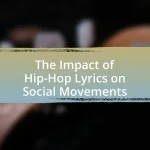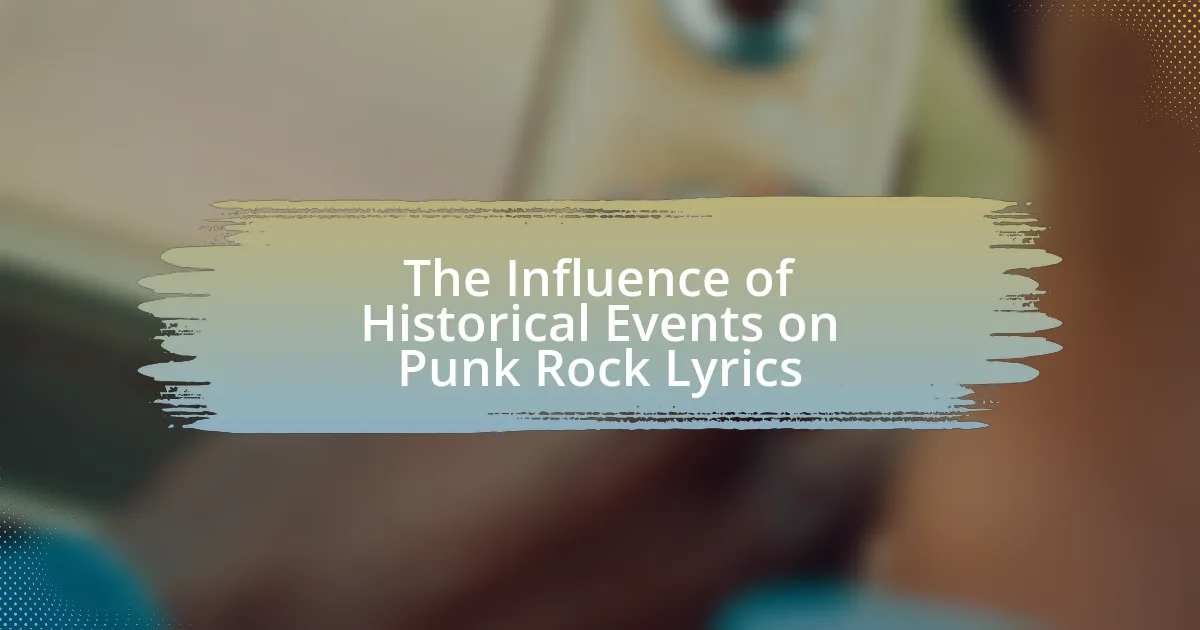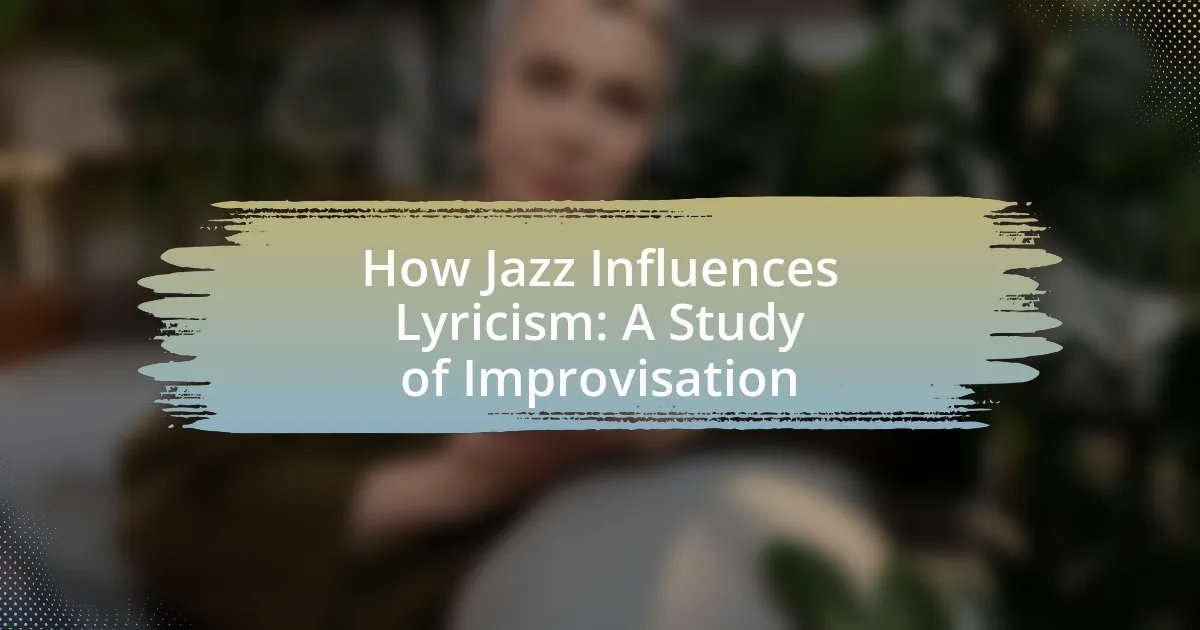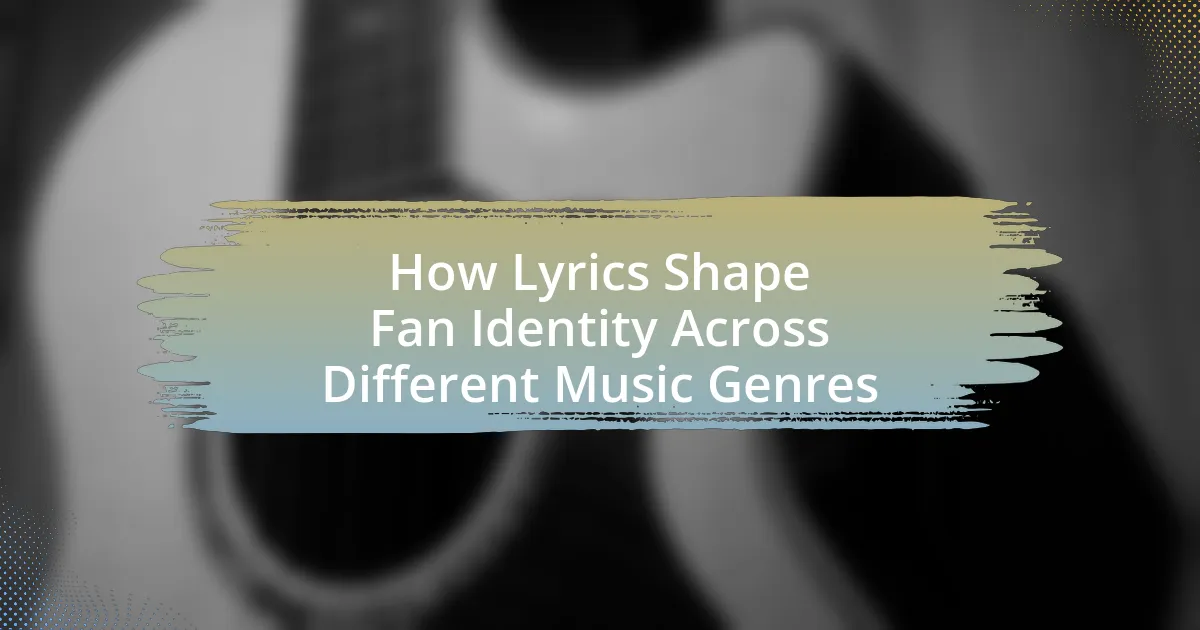The article examines the significance of repetition in R&B lyrics, highlighting its role in enhancing emotional resonance and memorability. It discusses how repetition emphasizes key themes such as love, heartbreak, and desire, creating a deeper connection with listeners. The article also explores various types of repetition, including anaphora, epistrophe, and chorus repetition, and their impact on listener engagement and song structure. Additionally, it addresses historical influences on the use of repetition in R&B and compares its effectiveness to other music genres, ultimately underscoring its importance in crafting memorable hooks and emotional narratives.

What is the significance of repetition in R&B lyrics?
Repetition in R&B lyrics serves to enhance emotional resonance and memorability. This technique allows artists to emphasize key themes, such as love, heartbreak, or desire, making the message more impactful for listeners. For instance, songs like “End of the Road” by Boyz II Men utilize repetitive phrases to evoke strong feelings of longing and nostalgia, reinforcing the emotional weight of the lyrics. Studies in music psychology indicate that repetition aids in retention and recognition, which is crucial in a genre where emotional connection is paramount.
How does repetition enhance the emotional impact of R&B songs?
Repetition enhances the emotional impact of R&B songs by reinforcing key themes and feelings, making them more memorable and relatable to listeners. This technique allows artists to emphasize emotions such as love, heartbreak, or longing, creating a deeper connection with the audience. For instance, the repeated phrases in songs often serve as a mantra that resonates with listeners’ personal experiences, thereby intensifying the emotional experience. Research indicates that repetition in music can trigger emotional responses in the brain, as highlighted in studies by neuroscientists who found that familiar patterns elicit stronger emotional reactions.
What specific emotions are often conveyed through repeated phrases?
Repeated phrases in R&B lyrics often convey emotions such as longing, nostalgia, and urgency. These emotions are amplified through repetition, which serves to emphasize the singer’s feelings and create a deeper emotional connection with the listener. For instance, the use of phrases like “I miss you” or “I need you” repeatedly highlights the intensity of longing and desire, making the sentiment more palpable. Research indicates that repetition in music can enhance emotional engagement, as it allows listeners to resonate more profoundly with the expressed feelings, thereby reinforcing the emotional impact of the lyrics.
How does repetition affect listener engagement and connection?
Repetition significantly enhances listener engagement and connection by reinforcing key themes and emotions within the music. When listeners encounter repeated phrases or melodies, it creates familiarity, which can evoke stronger emotional responses and facilitate deeper connections to the song’s message. Research indicates that repetition in music can lead to increased memorability and enjoyment, as demonstrated in a study published in the journal “Psychology of Music,” where participants reported higher engagement levels with songs that utilized repetitive structures. This psychological effect underscores the importance of repetition in R&B lyrics, as it not only captivates the audience but also fosters a sense of shared experience and emotional resonance.
Why is repetition a common technique in R&B music?
Repetition is a common technique in R&B music because it enhances emotional expression and memorability. This genre often focuses on themes of love, heartbreak, and longing, where repeated phrases can amplify the emotional weight of the lyrics. For instance, songs like “End of the Road” by Boyz II Men utilize repetition to reinforce feelings of yearning and nostalgia, making the message more impactful for listeners. Additionally, studies in music psychology indicate that repetition aids in listener retention, allowing key phrases to resonate and stick in the audience’s mind, which is crucial for the commercial success of R&B tracks.
What historical influences have shaped the use of repetition in R&B?
The use of repetition in R&B has been shaped by historical influences such as African musical traditions, gospel music, and the evolution of soul music. African musical traditions emphasize call-and-response patterns and rhythmic repetition, which have been integrated into R&B to create engaging and memorable hooks. Gospel music, a significant precursor to R&B, utilizes repetition to evoke emotional responses and reinforce spiritual messages, influencing R&B artists to adopt similar techniques for emotional impact. Additionally, the evolution of soul music in the 1960s, which often featured repetitive choruses and phrases, further solidified repetition as a key element in R&B songwriting, enhancing its appeal and accessibility to audiences.
How does repetition compare to its use in other music genres?
Repetition in R&B lyrics is often more pronounced and emotionally driven compared to its use in other music genres. In R&B, repetition serves to emphasize emotional themes and create a memorable hook, which is crucial for connecting with listeners on a personal level. For instance, songs like “Ain’t No Mountain High Enough” utilize repeated phrases to reinforce the message of unwavering support, making it resonate deeply with audiences. In contrast, genres like rock or classical may use repetition for structural purposes or to build tension, rather than to evoke emotion. This distinction highlights how R&B uniquely leverages repetition to enhance lyrical impact and listener engagement.

What are the different types of repetition found in R&B lyrics?
R&B lyrics commonly feature three types of repetition: anaphora, epistrophe, and chorus repetition. Anaphora involves repeating a word or phrase at the beginning of successive lines or verses, enhancing emotional impact and creating a rhythmic flow. Epistrophe, on the other hand, repeats words or phrases at the end of lines, which can emphasize key themes or emotions. Chorus repetition is prevalent in R&B, where the chorus is repeated multiple times throughout a song, reinforcing the central message and making it memorable for listeners. These techniques are integral to the genre, as they enhance lyrical expression and listener engagement.
How do lyrical hooks utilize repetition in R&B songs?
Lyrical hooks in R&B songs utilize repetition to enhance memorability and emotional impact. This technique allows listeners to easily recall the song and connect with its themes, as repeated phrases often encapsulate the core message or feeling of the track. For instance, songs like “No Scrubs” by TLC and “We Belong Together” by Mariah Carey feature catchy hooks that repeat key lines, reinforcing the emotional resonance and making them more relatable. Research indicates that repetition in music can increase listener engagement and retention, as demonstrated in studies on cognitive processing in music perception.
What role do choruses play in reinforcing themes through repetition?
Choruses play a crucial role in reinforcing themes through repetition by providing a memorable and emotionally resonant anchor within a song. This repetition allows listeners to internalize the central message, making it more impactful and relatable. For instance, in R&B music, choruses often encapsulate the song’s emotional core, using repeated phrases to emphasize feelings of love, heartbreak, or empowerment. Studies show that repeated exposure to specific lyrical themes enhances listener engagement and retention, thereby solidifying the thematic elements in the audience’s mind.
How does verse repetition contribute to storytelling in R&B?
Verse repetition in R&B enhances storytelling by reinforcing emotional themes and creating a memorable narrative structure. This technique allows artists to emphasize key emotions or experiences, making them resonate more deeply with listeners. For instance, in songs like “Back to Black” by Amy Winehouse, the repeated verses highlight feelings of heartbreak and longing, effectively immersing the audience in the artist’s emotional journey. Research indicates that repetition in music aids memory retention, which further solidifies the narrative impact by ensuring that the core message remains with the listener long after the song ends.
What are the effects of melodic repetition in R&B music?
Melodic repetition in R&B music enhances emotional engagement and memorability for listeners. This technique creates a sense of familiarity, allowing audiences to connect more deeply with the song’s themes and emotions. Research indicates that repetition can increase the likelihood of a song being remembered and recognized, as demonstrated by studies showing that repeated melodies are more easily recalled (e.g., the work of Huron, 2006, in “Sweet Anticipation: Music and the Psychology of Expectation”). Additionally, melodic repetition can evoke nostalgia and reinforce the emotional impact of lyrics, making the overall listening experience more profound.
How does melodic repetition complement lyrical themes?
Melodic repetition enhances lyrical themes by reinforcing emotional resonance and memorability. In R&B music, repeated melodic phrases often align with key lyrical messages, creating a cohesive listening experience that emphasizes the song’s emotional core. For instance, in tracks like “Ain’t No Mountain High Enough” by Marvin Gaye and Tammi Terrell, the repeated melodic lines underscore themes of unwavering support and love, making the message more impactful. This technique not only aids in listener retention but also deepens the emotional connection to the lyrics, as the melody serves as an auditory anchor for the thematic content.
What impact does melodic repetition have on song memorability?
Melodic repetition significantly enhances song memorability by reinforcing the musical theme and making it easier for listeners to recall. Research indicates that repeated melodies create familiarity, which aids in memory retention; for instance, a study published in the journal “Psychology of Music” by Hargreaves and North found that repeated musical phrases are more likely to be remembered than non-repeated ones. This familiarity effect occurs because the brain processes repeated melodies more efficiently, leading to stronger neural connections associated with the song.

How does repetition influence the overall structure of R&B songs?
Repetition significantly influences the overall structure of R&B songs by creating memorable hooks and reinforcing emotional themes. This technique enhances listener engagement, as repeated phrases or choruses become easily recognizable and resonate with the audience. For instance, many R&B tracks utilize a repetitive chorus to emphasize the song’s central message, making it more impactful. Research indicates that songs with repetitive elements tend to achieve higher chart success, as seen in Billboard data, where tracks like “No Scrubs” by TLC and “We Belong Together” by Mariah Carey effectively employed repetition to solidify their popularity.
What are the common structural patterns that incorporate repetition?
Common structural patterns that incorporate repetition in R&B lyrics include the chorus, refrain, and verse repetition. The chorus often repeats the same lines or phrases, creating a memorable hook that reinforces the song’s theme. The refrain, which may appear at the end of verses, emphasizes key ideas or emotions, enhancing the song’s emotional impact. Additionally, verse repetition, where specific lines or phrases are reiterated throughout the song, serves to deepen the listener’s connection to the narrative or sentiment being expressed. These patterns are prevalent in R&B, as they help to create a rhythmic and emotional resonance that is characteristic of the genre.
How does repetition affect the pacing and flow of a song?
Repetition significantly influences the pacing and flow of a song by creating a rhythmic anchor that enhances memorability and emotional impact. In R&B, this technique allows for smoother transitions between sections, maintaining listener engagement while reinforcing key themes or emotions. Studies show that songs with repetitive elements often achieve higher listener retention rates, as the familiarity encourages sing-along participation and emotional connection. For instance, tracks like “Stay” by Rihanna utilize repetition to establish a compelling flow, making the emotional weight of the lyrics more impactful.
What are the implications of repetition on song length and radio play?
Repetition in songs typically leads to shorter song lengths and increased radio play. Songs that utilize repetition often have catchy hooks and memorable choruses, which enhance listener engagement and retention. Research indicates that radio stations favor tracks that are easily recognizable and can be played repeatedly without listener fatigue, thus favoring songs with repetitive elements. For instance, a study by the University of Southern California found that songs with repetitive structures are more likely to be played on the radio, as they align with audience preferences for familiarity and sing-along potential. This trend suggests that repetition not only influences the artistic composition of R&B lyrics but also significantly impacts commercial viability and airplay frequency.
How can artists effectively use repetition in their R&B lyrics?
Artists can effectively use repetition in their R&B lyrics by emphasizing key themes and emotions, which enhances memorability and emotional impact. Repetition allows listeners to connect with the song’s message, as seen in tracks like “Back to Black” by Amy Winehouse, where repeated phrases underscore feelings of longing and heartbreak. This technique not only reinforces the lyrical content but also creates a rhythmic structure that resonates with audiences, making the song more engaging and relatable.
What best practices should songwriters follow when incorporating repetition?
Songwriters should focus on clarity, emotional impact, and structural consistency when incorporating repetition. Clarity ensures that the repeated phrases are easily understood and resonate with the audience, enhancing memorability. Emotional impact is crucial; repetition should amplify the feelings conveyed in the lyrics, making the song more relatable and engaging. Structural consistency involves using repetition strategically within verses, choruses, or bridges to create a cohesive flow, which is a common technique in successful R&B songs. For instance, many hit R&B tracks utilize a repeated hook that reinforces the song’s theme, making it more likely to stick in listeners’ minds.
How can repetition be used to create memorable hooks and choruses?
Repetition can be used to create memorable hooks and choruses by reinforcing key phrases and melodies, making them easier for listeners to remember. This technique is prevalent in R&B music, where repeated lines or phrases create emotional resonance and enhance the overall catchiness of a song. For example, songs like “Ain’t No Mountain High Enough” by Marvin Gaye and Tammi Terrell utilize repetition in their choruses to emphasize the message of unwavering support, making it instantly recognizable and memorable. Studies in music psychology indicate that repetition aids in memory retention, as it allows listeners to internalize the song’s core themes more effectively.





